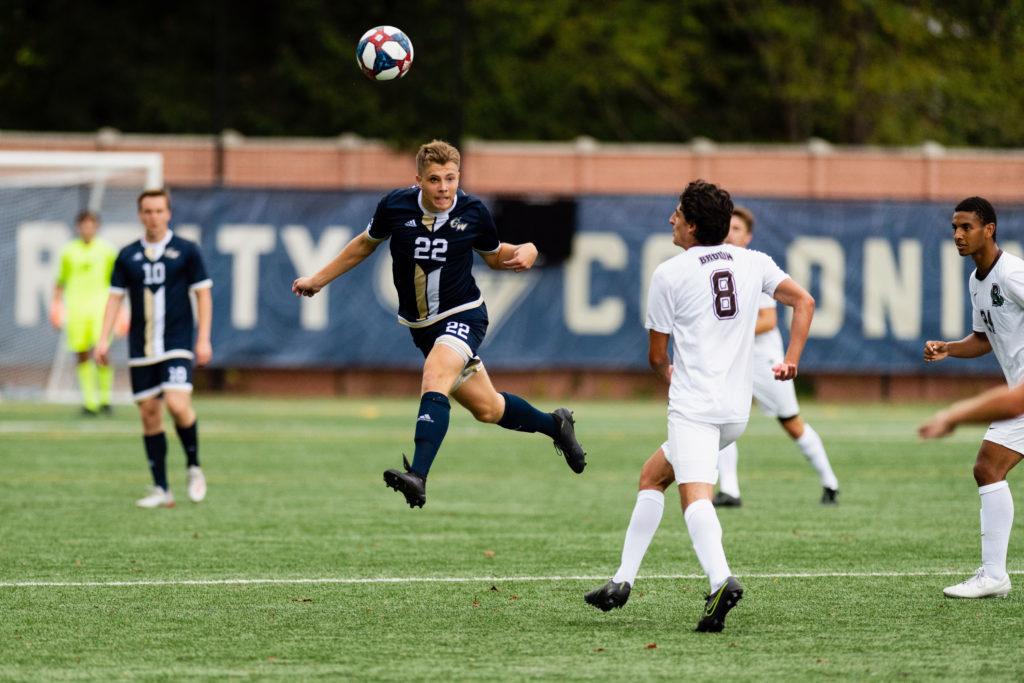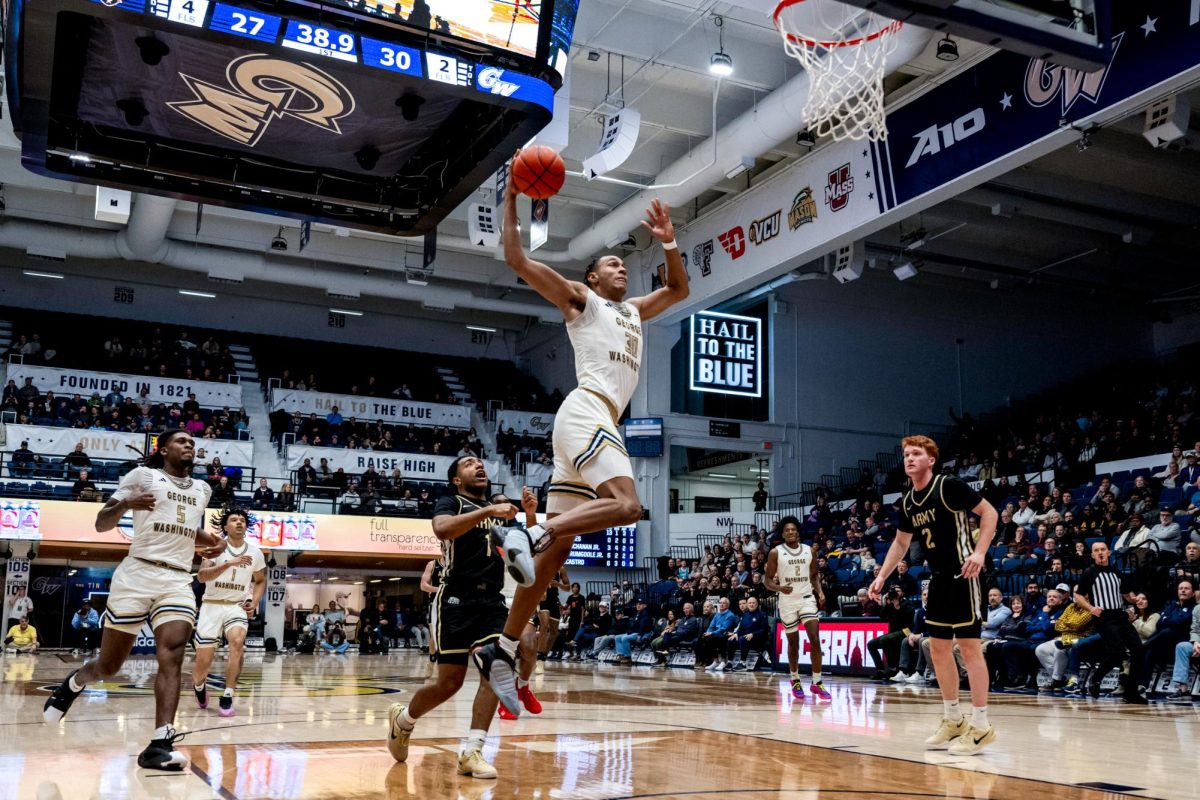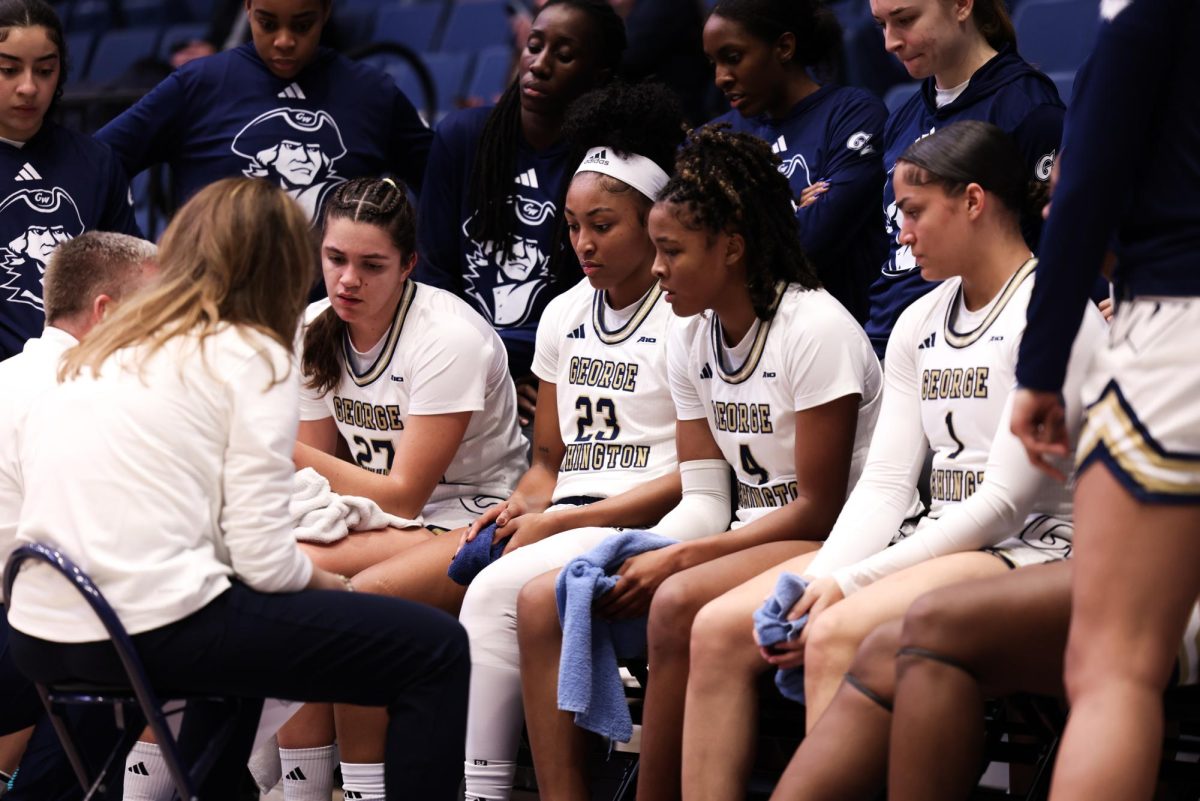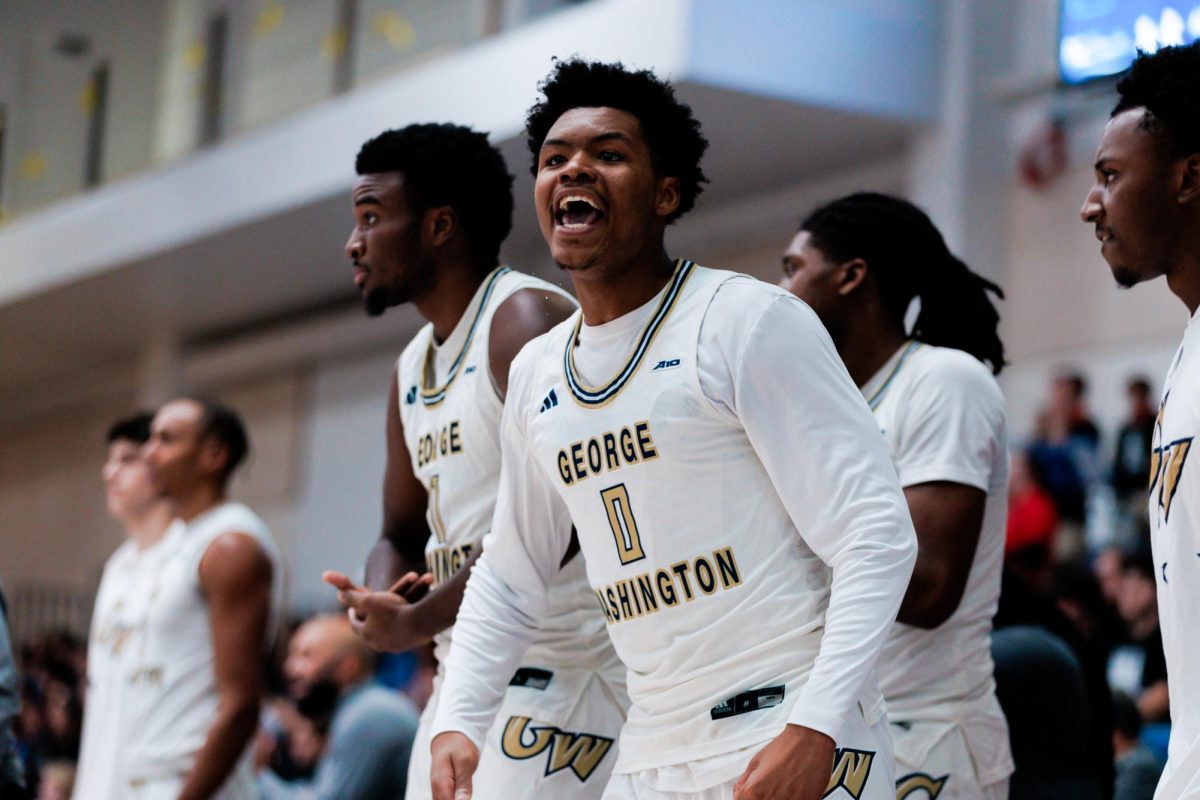Look to the court, in the pool and on the field to find one of the most globally diverse athletic programs in the Atlantic 10.
International students represent nearly 16 percent of the total student-athlete population, accounting for 73 of the 461 student-athletes, according to data collected from GW rosters. GW tallies the second highest percentage of international student-athletes in the A-10, just behind VCU’s roughly 19 percent global student population.
Student-athletes said GW’s location in the nation’s capital and a relatively high percentage of international students across the University attracted them to the school and helped them acclimate to collegiate life and athletics. Coaches said international student-athletes bring experience of different playing styles from around the world, giving teams an edge over their A-10 peers.
“GW has always been an internationally renowned university, so we’re always going to attract international students whether we are going out and finding them or whether they’re coming to us,” men’s soccer head coach Craig Jones said.
Number of international student-athletes by country
Credit: Google Developers Charts and Jack Liu | Web Developer
International presence across teams
Of the 461 student-athletes at GW, 15.8 percent call a foreign country home. Students hailing from 35 different countries – including Egypt, Australia, Slovakia and Japan – comprise the international student-athlete community.
Four GW programs – men’s and women’s tennis, men’s squash and golf – are more than 50 percent international. Eleven programs – men’s and women’s cross country and track and field, women’s rowing, baseball, softball, lacrosse and women’s basketball – have an entirely American roster.
Men’s and women’s tennis hold the highest proportion of international players of all GW programs, with two-thirds of players coming from a combined eight different countries.
Golf holds the second highest proportion of international-to-American players with five international golfers and three Americans. Golf head coach Chuck Scheinost said he aims to give his golfers exposure to international playing styles because other athletes can gain a more diverse knowledge of the game.
“It’s cool to see them interact and learn about other cultures and how other people think, because in today’s world we are global in the way we deal with everything,” Scheinost said.
Scheinost added that golf is generally popular on the international stage and he chooses the strongest recruits he finds.
“With golf, it just depends on the year,” Scheinost said. “Some years international kids are stronger candidates and some years local kids are.”
Men’s and women’s squash head coach Anderson Good said players from different regions, like Egypt and Malaysia, prioritize different aspects of the game, like attacking and fitness. He added that recruiting an array of students from international and domestic backgrounds gives players exposure to different playing styles to bolster their play in competition.
“That’s the best part, because we’re bringing all these different styles of play, all these different ways to approach the game and make it one smorgasbord,” Good said. “We learn from each other and grow collectively because of it.”
Global A-10 presence
Compared to other A-10 schools, GW maintains the second largest international student-athlete population, clocking in at 15.8 percent. VCU outpaces GW with a 19.2 percent student-athlete population.
International students account for less than 10 percent of the student-athlete population at eight A-10 schools – Rhode Island, Saint Joseph’s, Fordham, Massachusetts, Richmond, Duquesne, Dayton and Davidson. At Duquesne, only about 2.9 percent of the student-athlete population is international.
Fordham and St. Bonaventure have two teams comprised of mostly international players, and Saint Louis, Massachusetts and Richmond all have one team with a global presence. Davidson, Dayton, La Salle, George Mason and Saint Joseph’s do not have programs with a majority of international student-athletes.
Tennis programs consistently notch the highest proportion of international players in the A-10. Of the 14 teams in the conference, seven schools have women’s tennis rosters and four have men’s tennis lineups dominated by international players.
Good, the men’s and women’s squash head coach, said recruiting international talent for squash is needed because squash teams are becoming more international. Men’s squash, along with four other teams in the College Squash Association, has a majority international student population.
Not all squash programs recruit internationally. Fordham’s men’s squash team lacks an international player, while other men’s programs in the CSA, like Cornell and Amherst, only have three or four international student-athletes.
Men’s soccer possesses nine international players on a 24-man roster. Jones, the men’s soccer head coach, said coaching staff must travel hundreds of miles to spot international students because they prioritize seeing prospective student-athletes play in person. The coaching staff has traveled to Germany, the United Kingdom and Trinidad looking for recruits, he said.
“You have to go there and you’ve got to watch these guys,” Jones said. “You can only travel so far being all over, except maybe for Africa right now, where we’re planning to go next year, but I’m not a coach who will take a kid on video.”
Student-athletes seek city campus
International student-athletes said they chose GW for its academic offerings and its D.C. location.
Women’s squash senior Engy Elmandouh hails from Cairo, Egypt and is one of five international players on the roster. She said having so many different styles of play represented has made the team well-rounded in shot selection.
She said that because five of the 11 players on the team are international, the transition into college life and collegiate squash is easier.
“Since we’re all international, English is not our first language, so it makes you feel at home because then you’re not as nervous because you know the person right next to you is experiencing the exact same thing,” Elmandouh said. “You go through it together and it makes you so much better.”
German graduate student midfielder and defender Sandro Weber said the sports management graduate program combined with the men’s soccer program lured him to the United States. He added that associate head coach Jack Ouimet reached out to him after seeing him at a showcase event in Germany.
“After one week, I got mail from my agency back in Germany that coach Jack and the GW soccer program was interested in me, and then I got in touch with coach Jones and coach Jack and then we talked by phone a lot, and they convinced me about GW,” Weber said.
Men’s soccer graduate student forward and midfielder Haukur Hilmarsson, an Iceland native, said he visited GW six months before he came to the program after Ouimet watched him play in Iceland. He said he “fell in love” with the city, which led him to commit to GW.
“I came and visited six months before I came here, and I just loved the city, loved the campus,” Hilmarsson said. “The [Mount Vernon Campus] is really nice for sports and the campus is great for living, so that’s why I wanted to come here.”
Good, the men’s and women’s squash coach, said while the international popularity of the sport is a factor, the diverse characteristics of the school can also influence the makeup of its teams.
“The type of school you are also dictates that,” Good said. “GW is a very transient campus in a major city, near a major airport, in D.C., which is one of the most diverse cities in the world. This is kind of a natural thing to happen for us.”
Emily Maise contributed reporting.





